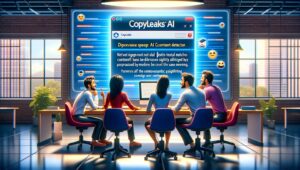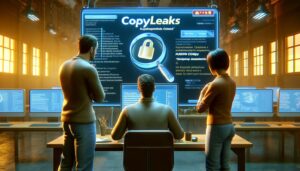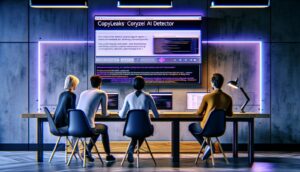Is Copyleaks AI detector accurate? Can we rely on this to sniff out AI-written content? Here’s what we found out.
In today’s fast-paced digital world, the line between human and machine-generated content is getting blurrier.
But, here’s where tools like the Copyleaks AI Detector come into play, promising to clear up the confusion. The big question on everyone’s mind is: can we trust it to tell the difference?
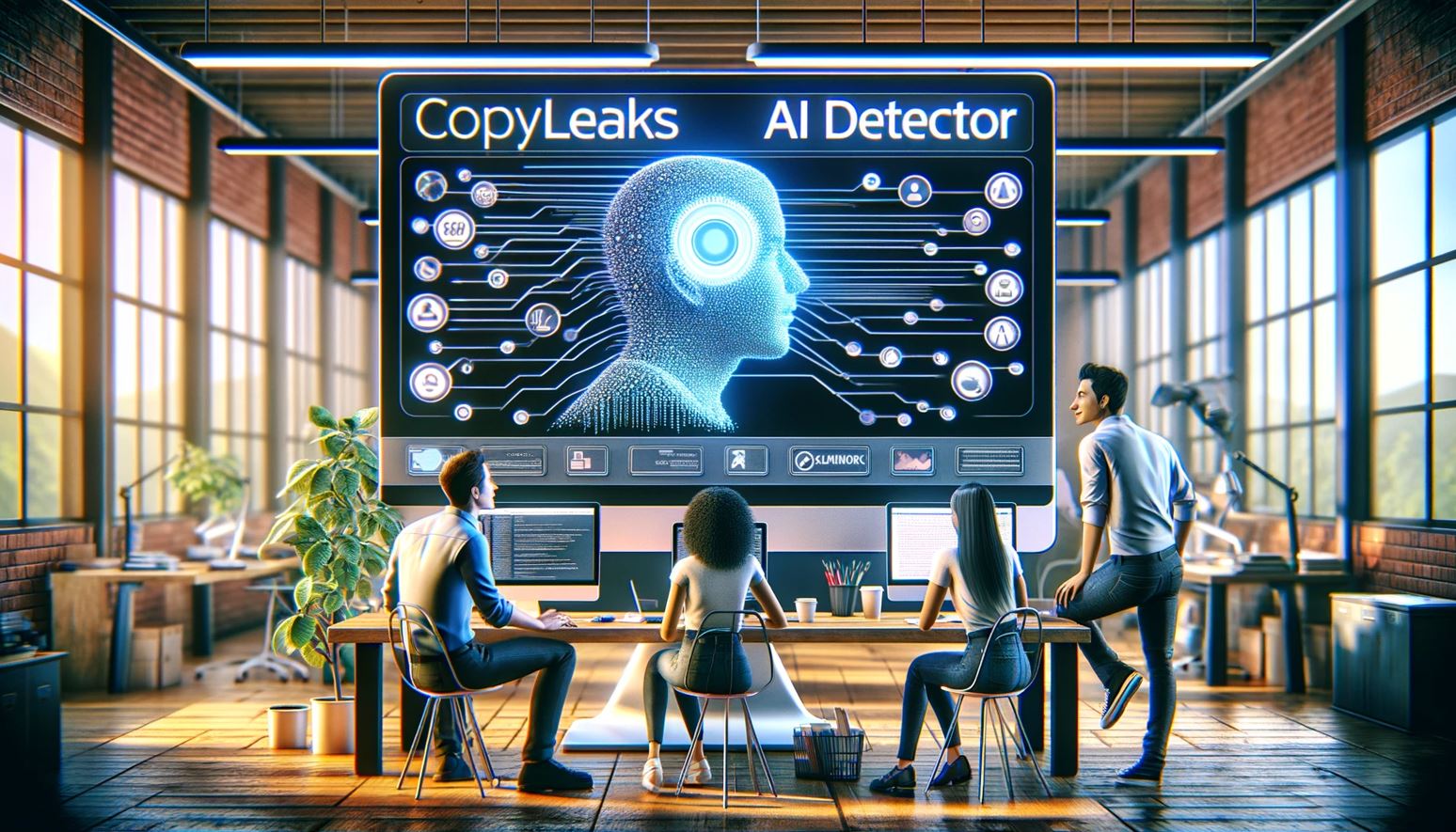
Try these new AI-powered tools:
- 5 Best AI Detectors To Unmask AI-Written Content With Accuracy
- 5 Best AI Writers To Boost Your Productivity And Content Quality.
- This "Secret AI Writer" Can Bypass AI Detection Like A Pro.
The Copyleaks AI content detector boasts a pretty impressive claim of achieving up to 99.12% accuracy in sniffing out AI-written text.
That’s like finding a needle in a haystack with your eyes closed — impressive, right?
This piece aims to shed some light on whether this tool lives up to its promise and how it stacks against others in the ring.
Article At-A-Glance
- Copyleaks AI Detector nails it with a 99.1% accuracy for spotting AI-made text, backed up by some solid research and head-to-heads with other tools.
- It’s not just about catching copycats. Copyleaks digs deep, using some serious tech to pick up on how stuff’s written, making sure even the tricky, reworded bits don’t slip through.
- Keeping it real online matters big time, and that’s where Copyleaks steps up. It’s all about dodging those awkward “gotcha” moments with content that’s too similar to someone else’s or, worse, penned by a bot.
- When it comes to staying ahead of the game, Copyleaks has got the edge. It’s on point with catching fakes, way more than just a basic check-up, giving you and your work that extra layer of shine.
Table Of Contents
Is Copyleaks AI Detector Accurate?
So, you’re wondering if the Copyleaks AI Detector hits the mark on accuracy? Well — spoiler alert — signs point to “yes.”
Studies from folks in the know and side-by-side checks with other tools show it’s not messing around.
Third-Party Studies Confirming Accuracy
If you’ve been tossing and turning at night, wondering whether Copyleaks AI Detector is up to snuff, it’s time to put those worries to bed. I mean, with all the buzz around, it’s hard not to get sucked into the whirlpool of doubts and skepticism.
But let’s talk numbers and facts that don’t lie. Coming straight from the horse’s mouth—well, not literally, but you get the drift.
Four independent third-party studies have thrown their weight behind Copyleaks, shining a spotlight on its accuracy and efficiency.
Imagine having that one friend who always knows when you’re lying—yeah, Copyleaks is kinda like that, but for AI-generated text.
Here’s the rundown in a nutshell, or should I say, in a table? Keep on reading. We’re going on a factual ride:
| Study Date | Researchers | Findings |
|---|---|---|
| July 2023 | Four Researchers from Around the Globe | Praised Copyleaks for its top-notch accuracy in detecting AI-generated content |
| Not specified | Anonymous Third-Party Study | Labeled Copyleaks the most accurate AI text detector on the market |
| Three other studies echoed these findings, highlighting Copyleaks’ efficiency and reliability. | ||
So, there you have it, folks! Think of Copyleaks as that detective with an uncanny knack for sniffing out AI-generated stuff from a mile away.
With power-packed performances and the spotlight firmly on its accuracy (backed by not one, but four independent studies), it’s kind of like having a secret weapon in your content arsenal.
Now, isn’t that something to sleep soundly over?
Comparison With Other AI Detection Tools
When we’re talking about Copyleaks AI Detector, it’s not just a matter of “is it good?”—it’s more like, “How does it stack up against the competition?” And boy, oh boy, do we have some interesting numbers to look at.
Copyleaks boasts an impressively low false positive rate of 0.2%, which is pretty much like saying, “We’re almost always spot-on.” But let’s not just take their word for it, shall we?
Let’s see how they fare when thrown into the ring with some other AI detection contenders.
| Feature | Copyleaks AI Detector | Sapling AI Detector | Other AI Detection Tools |
|---|---|---|---|
| False Positive Rate | 0.2% | Varies, but generally higher | Varied, often higher than Copyleaks |
| Efficiency | Quick and accurate | Dependable, but can be slower | Efficiency varies widely |
| Usability | User-friendly interface | Intuitive, but with a learning curve | Ranges from simple to complex |
| Content Quality Improvement | High | Moderate | Depends on the tool |
| Risk Mitigation | Excellent at minimizing plagiarism risk | Good, but not as specialized | Varies, some tools better suited for other tasks |
So, what we’re seeing here is that while there are certainly other fish in the sea, Copyleaks swims with a certain… panache, if you will. Its low false positive rate is not just a bragging right. It’s a testament to its precision.
Sure, we’ve got other tools like Sapling AI Detector, which does a stand-up job in its own right, but when it comes down to brass tacks—accuracy, efficiency, and all that jazz—Copyleaks seems to be playing a pretty sweet tune.
And let’s not forget, those pesky false positives can really throw a wrench in the works, wasting time and resources that none of us have to spare.
It’s kind of like finding a needle in a haystack …. only to realize it’s actually a piece of straw. With Copyleaks, it’s as if you’ve got a magnet for those needles.
It’s kind of like finding a needle in a haystack …. only to realize it’s actually a piece of straw. With Copyleaks, it’s as if you’ve got a magnet for those needles.
In the vast ocean of content, where the tides are always changing, having a reliable AI detector isn’t just nice—it’s necessary.
And with Copyleaks, it seems like you’ve got a pretty solid ship to navigate these waters.
What Is Copyleaks AI Detector?
Copyleaks AI Detector is a cool tool that helps find out if something was written by a person or made by AI. Think of it like a super-smart detective that can tell the difference between your writing and something a computer cooked up.
It’s pretty awesome because it is accurate about 99.12% of the time, and it barely ever makes mistakes—only getting things wrong 0.2% of the time! Plus, you can use it as much as you want without paying extra.
This tool stands out from others because many studies say it’s the best at figuring out if text is AI-generated. That’s great news for anyone wanting to make sure their content is top-notch and original.
Now, keeping things original matters more than ever with all this new AI stuff popping up left and right.
Next up, let’s chat about how this fancy tech not only saves you loads of time but also keeps your work quality on point.
Advantages Of Using Copyleaks AI Detector
Using Copyleaks AI Detector brings big wins your way. It’s as if you have a super smart buddy who speeds up your work and spots mistakes before they can turn into big oops moments.
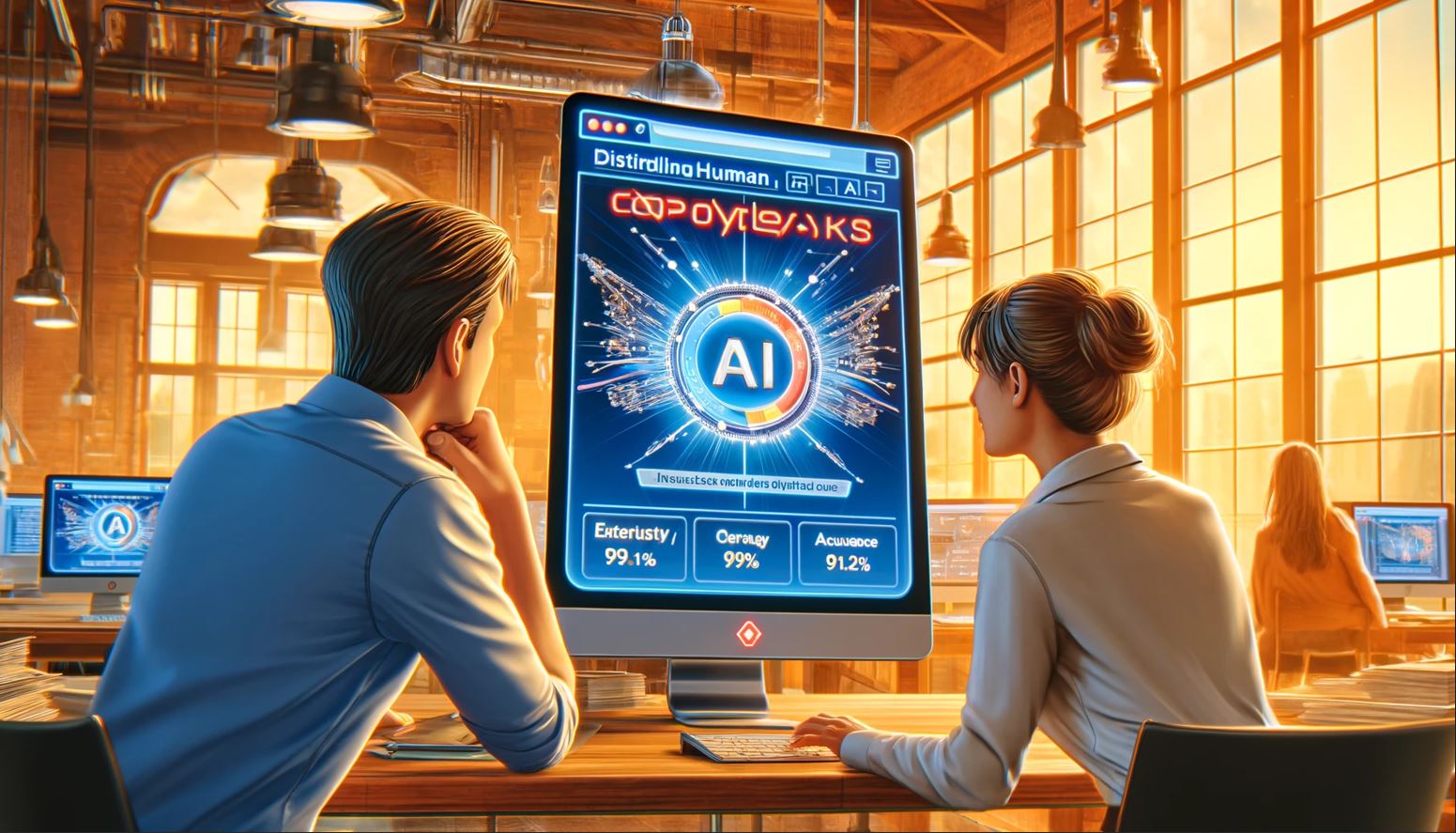
Time-Saving And Efficiency
Studies show the Copyleaks AI Content Detector is a real time-saver. This tool helps you find copied content fast.
Imagine having to check every line of your work against millions online – sounds like a nightmare, right? Well, that’s where this AI steps in.
It does all the heavy lifting in minutes, scanning vast amounts of text and comparing them for duplication detection.
This speedy process means you spend less time worrying about plagiarism and more on improving your content quality. Imagine having a super assistant who quickly tells you if your work is original or not.
And who doesn’t love saving hours while ensuring their work shines?
Plus, this efficiency isn’t just about time. It also means resources are used better elsewhere – think about focusing on creativity rather than checking lines one by one!
Improved Content Quality
Using Copyleaks AI Detector makes your content better. It spots text that machines write, making sure only the good stuff stays. You get high-quality work that shines. With its smart tech, errors have no place to hide.
This tool gives your writing a boost, setting you apart from others. It checks deeply and fast, catching sneaky mistakes. Your readers see clear, strong words. No fuss or fluff—just top-notch quality every time.
Mitigating Risks Of Plagiarism
Plagiarism is like a shadow in the world of writing—it follows quietly and can cover everything in darkness if not spotted.
Copyleaks AI Detector shines a light on this shadow, checking every corner for hidden copies.
With platforms like Copyleaks, you get a tool that scans through countless documents to find where content matches too closely with others. It’s about keeping content original and protecting your work from being mixed up with someone else’s.
This shields you from those nasty plagiarism pitfalls—like hurting your reputation or facing legal troubles.
Using Copyleaks has its perks since it’s kind of like having an eagle-eyed friend who spots trouble before it finds you. This way, creators keep their slate clean and their integrity intact.
No more worrying about accidentally borrowing too much from another source or stepping into copyright issues.
Now, let’s look at how misclassification errors might be less of a headache than we thought.
Potential Consequences Of Inaccurate AI Detection
Imagine the mess if an AI detector gets it wrong. Now, let’s go deeper into this topic.
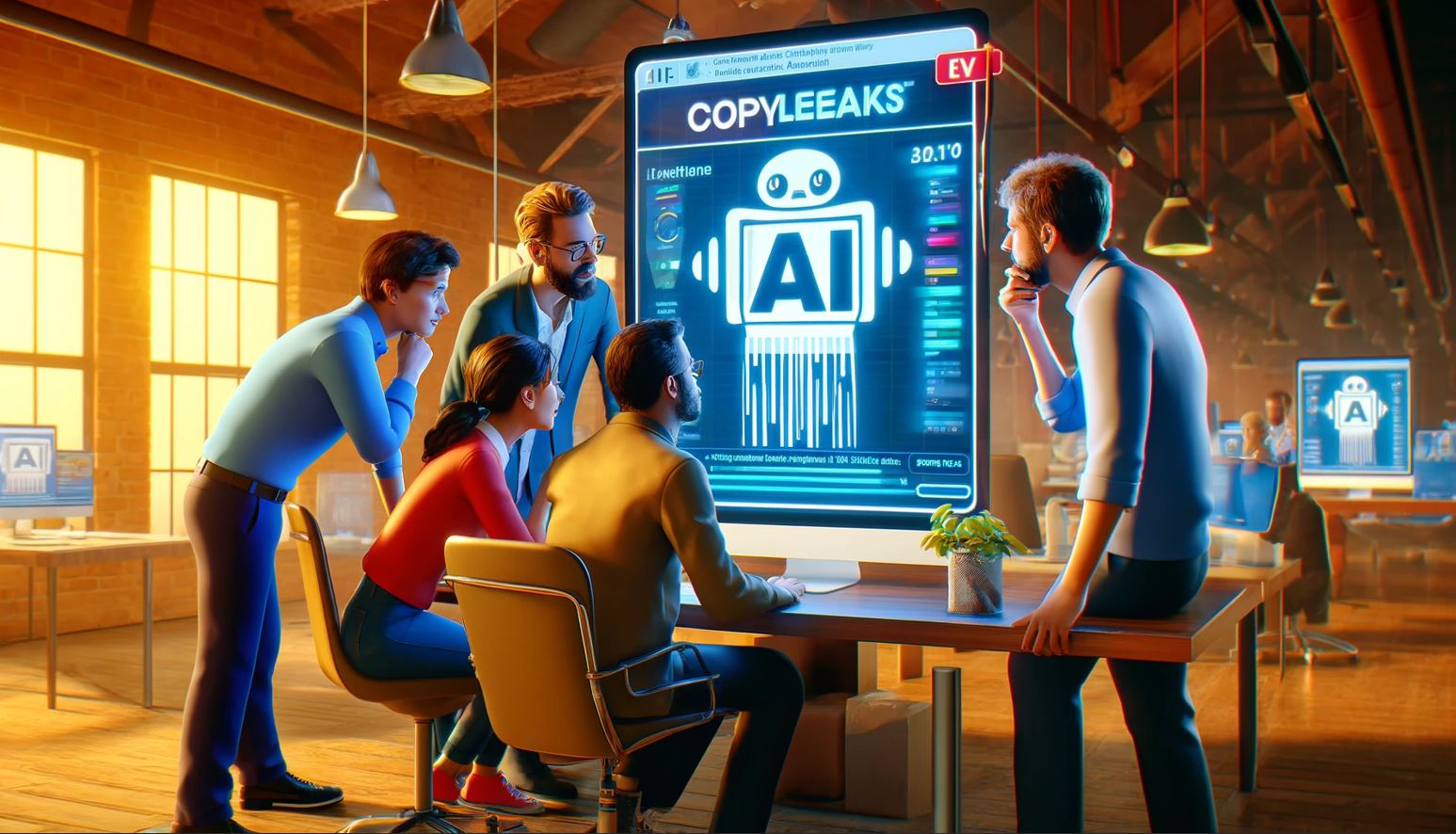
Reputation Damage
Reputation damage can hit hard and fast if AI detection tools mess up. Imagine a tool wrongly calling out someone’s work as copied. That mistake can spread like wildfire online, hurting a person’s or company’s good name.
People might start thinking twice before trusting them again. This is especially true for students accused of copying others’ work unfairly. It’s not just embarrassing. It goes against their honesty in school.
Such slip-ups make everyone doubt the detector’s reliability, stirring fear instead of trust. Wrong calls on plagiarism or mistaken content could shrink a brand’s integrity to nothing overnight.
Now, let’s move on to legal risks.
Legal Risks
Moving on from reputation damage, legal risks can’t be ignored. Using AI detectors like Copyleaks might lead to big problems with copyright violations and plagiarism claims. Imagine getting hit with a lawsuit because the tool missed or wrongfully flagged content.
It’s a real headache nobody wants.
These tools, while smart, aren’t perfect. They could label someone as a cheater when they’re not, based on false positives. This situation puts students in hot water academically and legally.
These tools, while smart, aren’t perfect. They could label someone as a cheater when they’re not, based on false positives. This situation puts students in hot water academically and legally.
The legal implications of such errors are serious for brands and individuals alike. Everyone needs to ensure their AI technology meets certain standards to avoid these pitfalls.
Wasted Resources
Using AI detectors that don’t hit the mark can lead to throwing time and money down the drain. Imagine schools using unreliable AI like Turnitin’s on millions of papers, only to face trust issues because it couldn’t tell a cheater from a straight-A student reliably.
That’s not just about wasted cash. It’s hours teachers spend double-checking or trying other tools.
The real kicker? Experts like Soheil Feizi spill the beans—many AI detectors playing traffic cops on content highways aren’t really up for the job in real life.
This means more than just dollars lost. It’s faith in tech taking a downturn and having folks scratch their heads if these tools are worth their salt at all.
Decreased Competitive Edge
Moving from the concept of wasted resources, it’s clear that accuracy issues with AI content detection like Copyleaks can hit hard in another vital area: competitive edge. If an agency fails to spot how rivals misuse their unique content, they’re basically giving away their playbook for free.
That’s a big no-no if staying ahead is the game plan. Losing this edge means customers might drift towards competitors who seem more original or innovative, thanks to snagged ideas.
Imagine working hard on a strategy just for a competitor to sneakily adopt it because your AI detector missed a beat. Frustration? Definitely. More than losing sleep over it, there’s a real risk of sliding down in market positioning.
This isn’t just about pride. It’s also about profits and presence too. False positives from an AI detector add insult to injury by distracting teams with wild goose chases instead of nailing the real deal – safeguarding against sneaky copycats aiming to chip away at your market standing.
Copyleaks AI Detector Is Accurate To Spot AI-Written Text
So, you’ve got the scoop on Copyleaks AI Detectorr. It’s pretty spot-on with up to 99.12% accuracy in detecting AI-written text, huh? Makes other tools look a bit “meh” in comparison!
But it’s not all sunshine – sometimes it trips over its own digital feet and labels human scribbles as computer-generated.
Oops! Still, considering it’s quick, free for unlimited scans, and sharp enough most of the time. Well, that’s quite the catch.
Don’t sweat the small stuff. No tool is perfect after all. Yet this one throws fewer curveballs than most. Oh, and if you’re worried about those false alarms – think of them as little nudges to double-check your work.
They keep things interesting!
But here’s why this matters: dodging plagiarism bullets like Neo in “The Matrix.” Nobody wants their rep going down because they missed copying a chunk of AI gibberish by mistake.
And honestly? Saving time while ensuring your content sings its own unique tune sounds kind of brilliant.
If curiosity’s still tickling you or there’s room for one more tab on your browser (come on, I know there is), do poke around some more on Copyleaks or similar beasts in the wild.
Alrighty then – go forth and keep your content legit with confidence! Who knows what marvelous creations will flow from your pen when fear isn’t holding back your hand?
Meet our resident tech wizard, Steve the AI Guy. Now, before you get any wild ideas, let’s clear up one thing – he’s 100% human! I mean, he’s got the work history to prove it. He spent a decade diving into the deep end of the tech industry doing business intelligence work, splashing around with two of the world’s largest business consulting companies, Deloitte and Ernst & Young. Learn More




